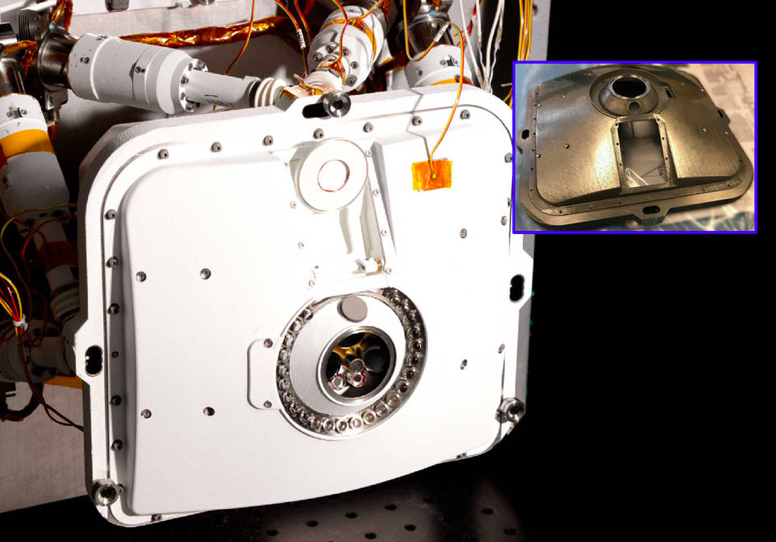
If all goes to plan, on February 18 2021 NASA's Perseverance rover will trundle across the Martian surface looking for, among other things, signs of fossilised microbial life. The device responsible for this is the Planetary Instrument for X-ray Lithochemistry, or PIXL for short. It will shoot X-ray beams at rock surfaces to analyse them.
PIXL will feature 5 3D-printed parts. Michael Schein, the lead mechanical engineer at JPL said, “In a very real sense, 3D printing made this instrument possible. These techniques allowed us to achieve a low mass and high-precision pointing that could not be made with conventional fabrication.”
The device is housed in a rotating turret at the end of a 2 metre long beam. Its two-piece titanium outer protective shell is also to be 3D printed, and NASA reckon this manufacturing method has reduced mass by up to a quarter compared to conventional methods.
Andre Pate, group lead for additive manufacturing at NASA's Jet Propulsion Laboratory in Southern California said, “It's like working with papier-mâché. You build each feature layer by layer, and soon you have a detailed part. Flying these parts to Mars is a huge milestone that opens the door a little more for additive manufacturing in the space industry.”
Seeking oxygen
Another task the rover will perform is to check if it’s feasible to acquire oxygen on the red planet. MOXIE (Mars Oxygen In-Situ Resource Utilisation Experiment) will grab some of the Martian atmosphere and heat it to 800 degrees Celsius as part of its experiments. Inside are six heat exchangers, nickel-alloy plates that protect parts of the instrument from the effects of the heat. Instead of machining two parts and joining them, the housing was printed as a single component. Samad Firdosy, a material engineer at JPL explained, “These kinds of nickel parts are called superalloys because they maintain their strength even at very high temperatures. Superalloys are typically found in jet engines or power-generating turbines. They're really good at resisting corrosion, even while really hot.”
To avoid the problem of microstructure pores or cracks forming the internal plates were treated in a hot isostatic press at over 1,000 degrees. Microscopic examination and physical testing then determine durability. Firdosy added, “I really love microstructures. For me to see that kind of detail as material is printed, and how it evolves to make this functional part that's flying to Mars – that's very cool.”

















